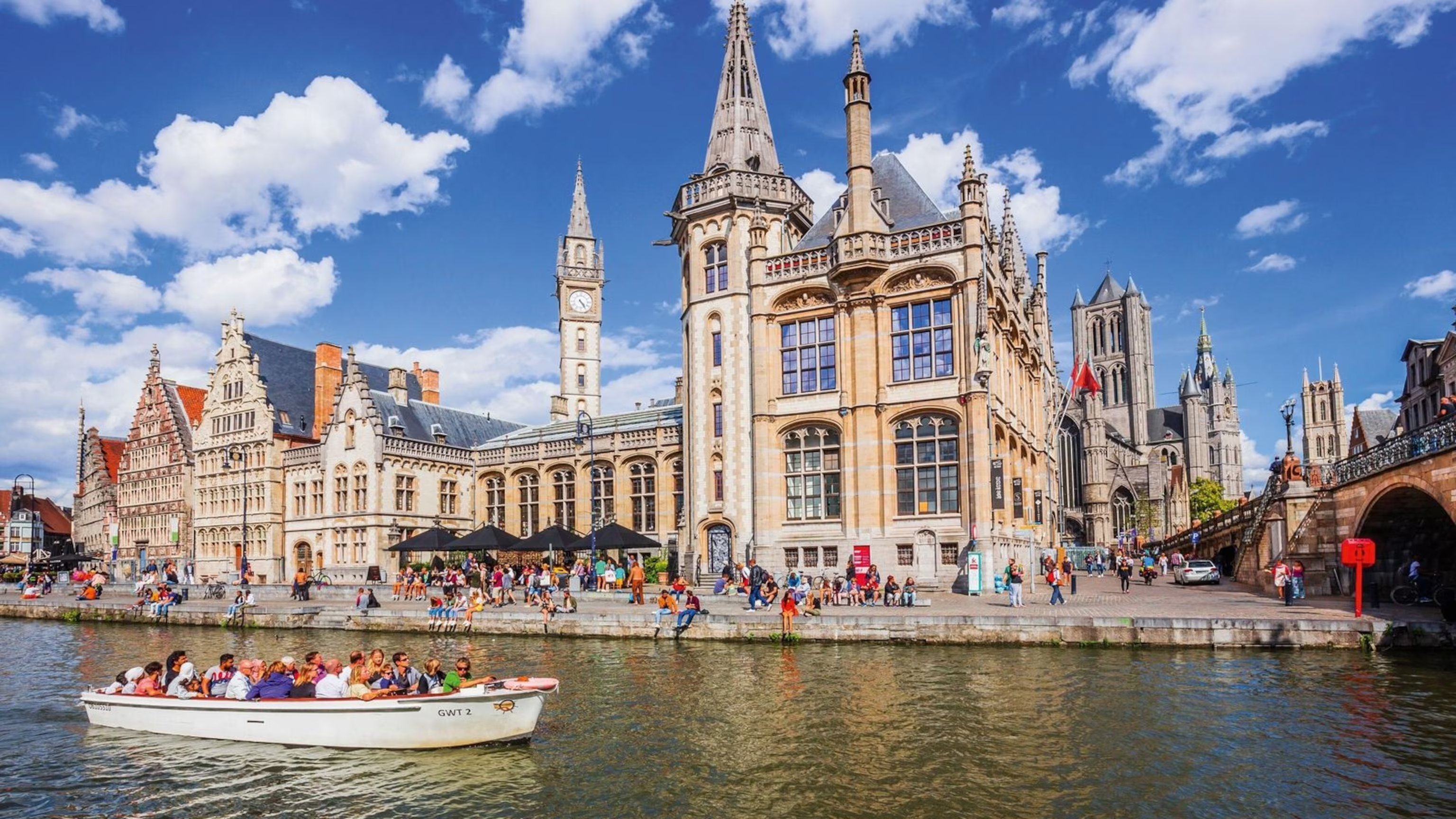While Europe’s major cities like Paris, Rome, and London attract millions of tourists annually, the continent is dotted with lesser-known gems that offer a deep dive into local culture without the overwhelming crowds. These hidden treasures provide a unique blend of history, culture, and gastronomy, offering an authentic experience often overlooked by the typical travel guides. From the serene streets of a quiet medieval town to the vibrant markets of an undiscovered cultural hub, these cities are perfect for travelers seeking to uncover the real heart of Europe. This article explores four such cities, each offering distinct experiences that promise to enrich your understanding of Europe’s diverse cultural tapestry.
1. Ghent, Belgium: A Medieval Marvel
Unveiling the Historical and Artistic Splendor
Ghent is often overshadowed by its more famous neighbor, Bruges, but this city in the heart of Belgium is a spectacle of medieval architecture and modern culture. With its well-preserved old town, Ghent features stunning examples of medieval architecture such as the Saint Bavo Cathedral and Gravensteen Castle. The city is also a haven for art enthusiasts, home to the famous altarpiece, “The Adoration of the Mystic Lamb” by the Van Eyck brothers. The vibrant local scene is complemented by numerous cafes and bars along the charming Graslei harbor. For more detailed visitor information, Visit Ghent’s official tourism website offers comprehensive travel tips and event listings.
2. Ljubljana, Slovenia: Europe’s Green Capital
A Blend of Green Spaces and Vibrant Cultural Life
Slovenia’s capital, Ljubljana, is a model of environmental sustainability, often referred to as Europe’s green capital. The city center is largely pedestrianized, making it ideal for exploring on foot or by bike, available through the city’s extensive bike-sharing program. Ljubljana Castle, perched on a hilltop, provides panoramic views of the city’s green landscapes and the distant Alps. The Ljubljanica River, with its picturesque bridges and riverside cafes, adds to the city’s charm. Cultural enthusiasts will appreciate the rich program of events and the blend of classical and contemporary art available at Ljubljana’s cultural events page.
3. Valletta, Malta: A Sunlit City of Baroque Splendor
Rich History Wrapped in Mediterranean Beauty
Valletta, the capital of Malta, is a treasure trove of historic architecture and Baroque art. This compact city is packed with historical significance, being one of the earliest sites recognized by UNESCO for its whole-city preservation. Key attractions include St. John’s Co-Cathedral, with its lavish interiors and Caravaggio masterpieces, and the Grand Master’s Palace. The city’s unique position in the Mediterranean has shaped its diverse culinary offerings, which can be savored in the many eateries dotting its ancient streets. Travelers looking to explore Valletta can find extensive guides and resources at Visit Malta.
4. Cáceres, Spain: A Monumental Ensemble in Extremadura
A Journey Back in Time in Spain’s Historic Heartland
Less frequented by the tourist hordes, Cáceres offers a profound glimpse into Spain’s medieval past. The city’s old town, a UNESCO World Heritage site, is an exquisite example of Roman, Moorish, Gothic, and Renaissance architecture. Walking through the cobbled streets of Cáceres, one can discover hidden palaces and ancient fortifications, virtually untouched by modernity. The city is also known for its culinary excellence, particularly its tapas and Michelin-starred restaurants. For those planning a visit, detailed travel advice and historical background are available on Spain’s official tourism portal.
Conclusion: Unveiling Europe’s Hidden Cultural Jewels
Exploring these lesser-known cities allows travelers to experience the richness of European culture without the pressure of bustling tourist spots. Each city offers a unique window into the past and present of their respective cultures, enriched by centuries of history and tradition. As you plan your next European adventure, consider stepping off the beaten path to uncover these hidden gems. For additional information and travel tips, resources such as Lonely Planet and Rick Steves’ Europe provide valuable insights and recommendations for a truly enriching travel experience. Discovering these cities not only enriches your travel repertoire but also contributes to a more sustainable and responsible tourism ecosystem in Europe.

